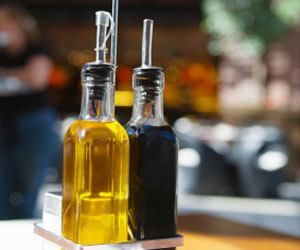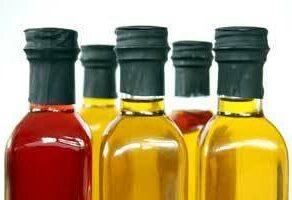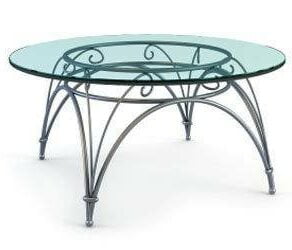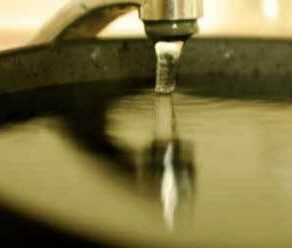
Joe asked: How do I clean glass bottles with stains and oil? We keep vegetable oil, teriyaki sauce and cooking oil in these little, glass bottles with spigot tops next to our stove for ease and convenience while cooking. Now, they are stained and getting sluggish inside. We are finding it very hard to clean. Do you have any suggestions?
Oil and condiment bottles are often decorative and designed for beauty, but for all practical purposes they can be impossible to clean. Fortunately, the solution is surprisingly simple. If your condiment bottles have narrow necks and are full of gunk, here’s a process that will have them looking like new in no time!
You Will Need:
- Dawn dish detergent
- Hot water
- Uncooked rice
Steps to Clean the Bottles:
- Rinse the bottles as clean as possible before you begin.
- Fill the bottle about one-quarter full of uncooked rice.
- Add enough Dawn dish liquid or another similar ammonia-based dish liquid to fill the bottle to the halfway point.
- Fill half of the remaining distance to the top with hot water, the closer to boiling the better (but not boiling).
- Replace the lid or hold a finger (or towel) over the top of the bottle.
- Shake vigorously for several minutes (or as long as you can). The Dawn will cut the grease while the uncooked rice scours the sides.
- Allow to sit until the water cools, then dump it out.
- Repeat the process as often as necessary. Don’t over fill with rice or liquid, as you need it to move around easily to get the scrubbing action that will clean the bottle.
Additional Tips and Advice
- If the rice doesn’t seem to be working, you may have overfilled the bottle. Experiment with slightly less rice and liquid for a greater “shake”.
- Stubborn gunk can be broken loose with “pipe cleaners” or chenille stems. They will fit into the narrowest of openings. Another option is to look for a “straw brush” that is often found near bottles or spill proof cups in a store’s infant/toddler aisle.
- Consider soaking in a solution of half lemon juice and half hot water overnight for as much as a week. Replace the solution each day with fresh hot water; eventually the acid of the lemon juice should begin to work against the stain.
- If all else fails, it may be time to replace the bottle with a fresh one.








Make up some sodium hydroxide solution (caustic soda, lye)…
In reality, this is the basis of ALL soaps, and what you need to actually dissolve, is really quite small.
My preference is to use a weak solution, hot water and a LONG soak; that will dissolve almost anything from glass.
I’d use perhaps a level teaspoon of caustic soda, to every litre of water, and pour that in the bottle and leave it to soak for several days to several weeks.
The LONG soak times have more to do with my laziness and forward long-term planning.
In reality, you can totally fill the bottle with the solution, and just let it sit, or fill about 1/3 of the bottle with the solution and some sand and shake it up a few times a day, every day for several days.
Be sure to CAP your bottles and LABEL them “POISON,” around the cap, with a tag, if there are other people around, or children, etc.
Also, don’t put the bottles in the fridge or cupboard if there are, either.
The caustic soda is particularly aggressive, even in very weak solutions.
Handle it very carefully and wear eye “splash” protection.
Caustic soda does not “burn” protein, it disassembles it, chemically, which is why strength for strength (molecular/atomic/pH, etc.) caustic soda solutions in the eyes, are FAR worse, than acids.
But be sensible, safe, take your time etc., and it will clean oily grunge out of the bottles very easily.
For the alarmist freaks who crap themselves over this, caustic soda is what is in automatic dish washing tablets and powders, drain cleaners, degreasers, industrial washing equipment (bottles, etc.) .
It’s SAFE, but add it to COLD water or only a little bit at a time to hot water.
Keep your head out of the fumes. Etc.
Happy Cleaning.
Hi, Could you please help me remove silicone off the windscreen. The silicone was wiped off when wet, and now it’s smudgy. What would be the best to get it off with?
Thank you,
Cheryl
Dishwasher detergent works great!!!
What can I do if I boiled my bottles?
Before I read your post, I had two glass bottles in boiling water. The smell was actually coming from the pour spouts, so I placed them in the water too, and tried to frantically remove then once I saw that the plastic inserts were melting. 🙁
Can I salvage my spouts? If not, then where do you suggest I try to purchase two spouts instead of all new bottles? My bottles are soaking with the rice solution now. Thanks. 🙂
Princess,
In my personal opinion, I wouldn’t use it anymore. It’s the same principal of not drinking from a plastic water bottle that has sat in a hot car – heated plastic can leach chemicals into the water. If the plastic actually melts, as you mentioned, I would guess that’s even worse. I’m sure there are extenuating factors – the specific type of plastic that it is, etc., but ultimately, the healthier option would probably be to not use it.
Where to purchase new tops depends on what type of bottle you have. Check the brand website to see if they sell new spouts, or look online for private sellers (maybe someone broke their bottle and just has spouts to sell).
Source: Science Daily – Don’t drink the (warm) water, study says
Thank you, Melanie.
That is a great point that I forgot about and I would hate to use the plastic after it’s possibly unsafe from the heat. Thanks!
The spouts still work. I just need to solve the problem of leakage since the shape of the stopper is now altered.
When I boiled them, it’s not that I kept the water inside the bottle to use later. The issue with warmed plastic water bottles is that the chemicals seep into the water that we consume. I discarded the boiled water, so it won’t impose a threat to me.
I am grateful that the university has been studying the effects of BPA and antimony.
Thank you for the salad bottle cleaner information. The rice, Dawn dish detergent, and water did the trick and was quite easy to use. I will be letting others know about this cleaning method.